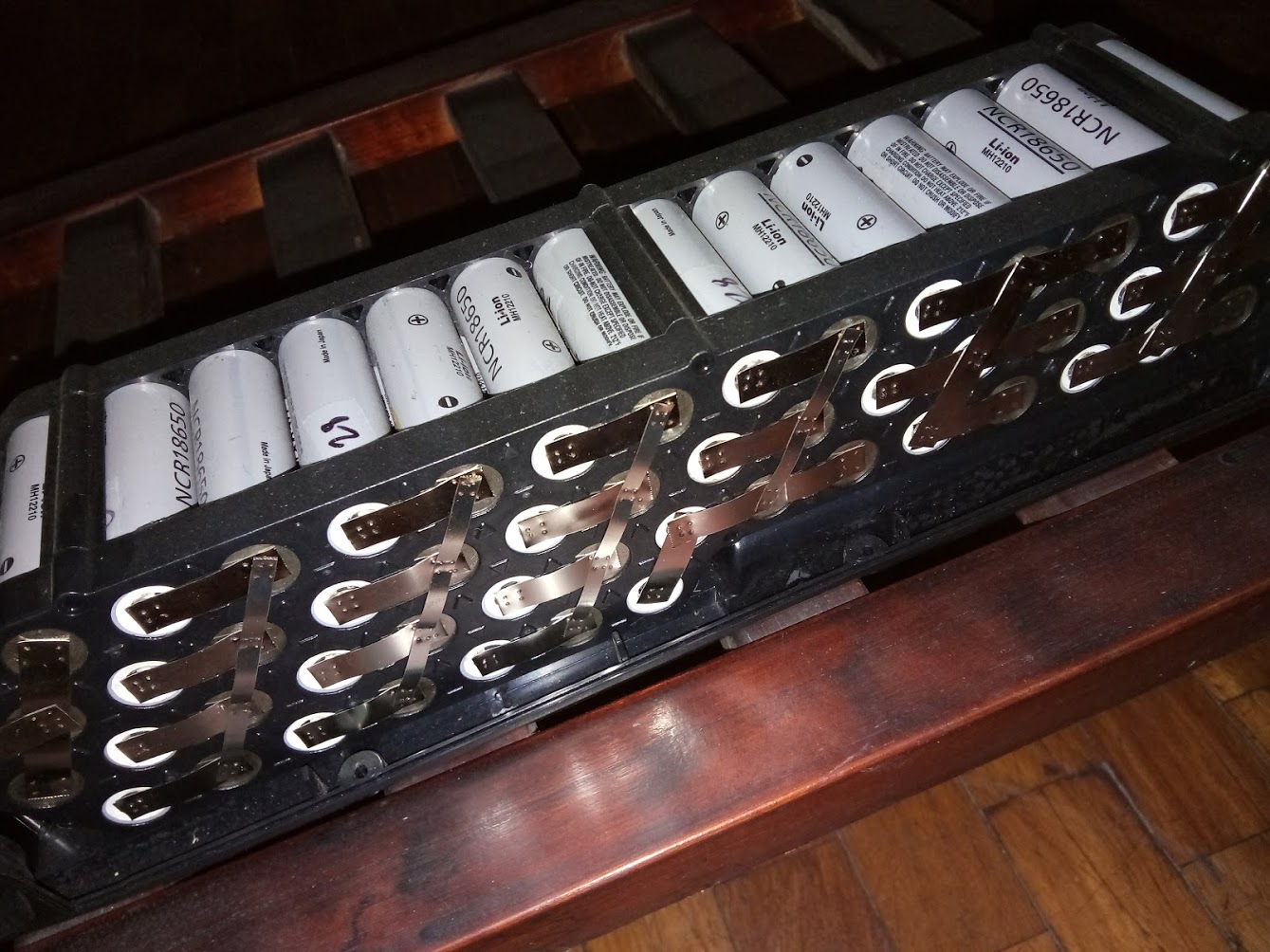I am an Australian engineer now living in Cebu, Philippines. A few months ago, I converted my 26" mountain bike into an ebike using a 48V 1000W conversion kit I purchased from China and 4 x 12V 16Ahr SLA batteries from Manila. There were a few problems that I had to solve, however I eventually got it all together and it worked!
My good Filipino friend, Erwin, has a tisikad that he uses transporting people and cargo around our sityo (neighbourhood) to earn money to keep his family. He was most impressed with my ebike conversion, so I offered to look into converting his trisikad into an etrisikad.
Here is his trisicad before conversion:

LH Profile with the driver Erwin in the background. That white animal bottom left is the only girl who truly loves me unconditionally. The motorcycle is my Yamaha YBR125G.
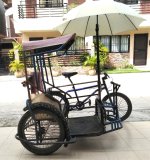
The first thing we needed to determine was if my conversion kit was powerful enough to power his trisikad. We did this by measuring the maximum static pulling force that his trisikad could exert with him pedalling and the same with my mountain bike just using the hub motor. This produced a pulling force of 30kg (294N) from his trisikad with 20" wheels and 32kg (315N) from my MTB with 26" wheels. It looked like the same conversion kit would be powerful enough for Erwin's triskad.
We next took some measurements to ensure that the hub motor would fit into his 20" wheel and into his bicycle frame. No problem with fitting into the wheel but it was going to be a tight fit into the frame. We both thought that it would work.
Another kit was then ordered from China a more batteries from Manila. It arrived about 2 weeks later.
Here is the conversion kit:
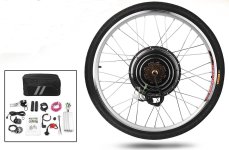 View attachment 7
View attachment 7  View attachment 5
View attachment 5
We were originally going to fit the hub motor into the right rear wheel as there was plenty of room in the frame for the hub motor. I then noticed that when turning right, trisikads turn about their right rear wheel (that wheel remains stationary while the bicycle pivots around it). As such, the hub motor had to go into the left rear wheel.
After a full day of mucking around, we finally got everything fitted and it WORKED! Erwin now has that ebike grin.
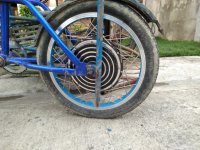
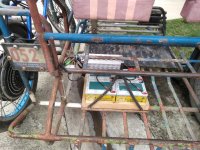
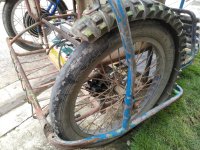

The etrisikad's pulling power was measured at 39kg (382N) and has a top speed (without passengers or cargo) of 39kph (24mph). With a full 250kg load plus Erwin, the trisikad was able to operate on all roads that it normally operates on without any problems.
Under normal operations, Erwin reports that he is getting about 60km (37 miles) range with his 4 x 12V 16Ahr batteries.
This is the first etrisikad in Cebu and probably the first in the Philippines. Total conversion cost was a little under USD400.
My good Filipino friend, Erwin, has a tisikad that he uses transporting people and cargo around our sityo (neighbourhood) to earn money to keep his family. He was most impressed with my ebike conversion, so I offered to look into converting his trisikad into an etrisikad.
Here is his trisicad before conversion:

LH Profile with the driver Erwin in the background. That white animal bottom left is the only girl who truly loves me unconditionally. The motorcycle is my Yamaha YBR125G.

The first thing we needed to determine was if my conversion kit was powerful enough to power his trisikad. We did this by measuring the maximum static pulling force that his trisikad could exert with him pedalling and the same with my mountain bike just using the hub motor. This produced a pulling force of 30kg (294N) from his trisikad with 20" wheels and 32kg (315N) from my MTB with 26" wheels. It looked like the same conversion kit would be powerful enough for Erwin's triskad.
We next took some measurements to ensure that the hub motor would fit into his 20" wheel and into his bicycle frame. No problem with fitting into the wheel but it was going to be a tight fit into the frame. We both thought that it would work.
Another kit was then ordered from China a more batteries from Manila. It arrived about 2 weeks later.
Here is the conversion kit:
 View attachment 7
View attachment 7  View attachment 5
View attachment 5We were originally going to fit the hub motor into the right rear wheel as there was plenty of room in the frame for the hub motor. I then noticed that when turning right, trisikads turn about their right rear wheel (that wheel remains stationary while the bicycle pivots around it). As such, the hub motor had to go into the left rear wheel.
After a full day of mucking around, we finally got everything fitted and it WORKED! Erwin now has that ebike grin.




The etrisikad's pulling power was measured at 39kg (382N) and has a top speed (without passengers or cargo) of 39kph (24mph). With a full 250kg load plus Erwin, the trisikad was able to operate on all roads that it normally operates on without any problems.
Under normal operations, Erwin reports that he is getting about 60km (37 miles) range with his 4 x 12V 16Ahr batteries.
This is the first etrisikad in Cebu and probably the first in the Philippines. Total conversion cost was a little under USD400.


